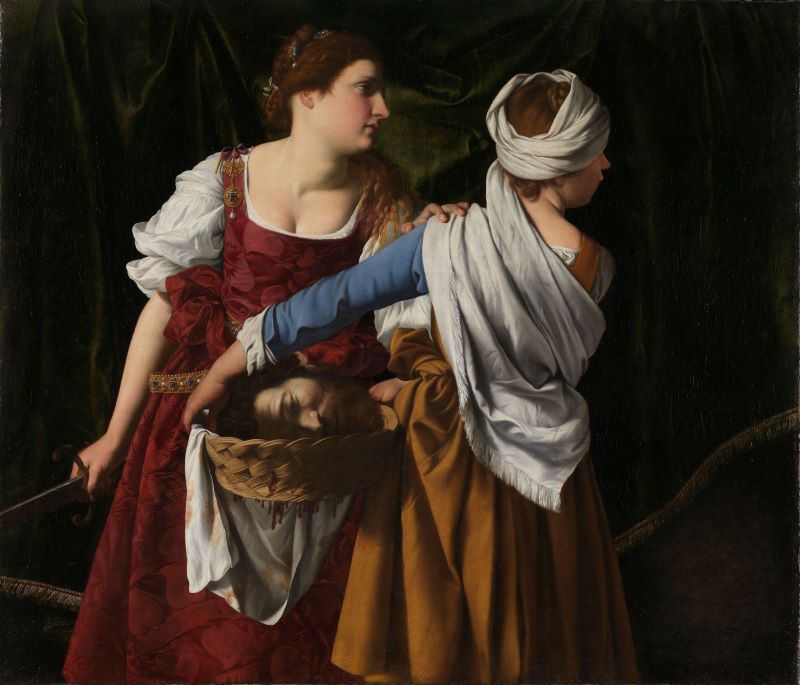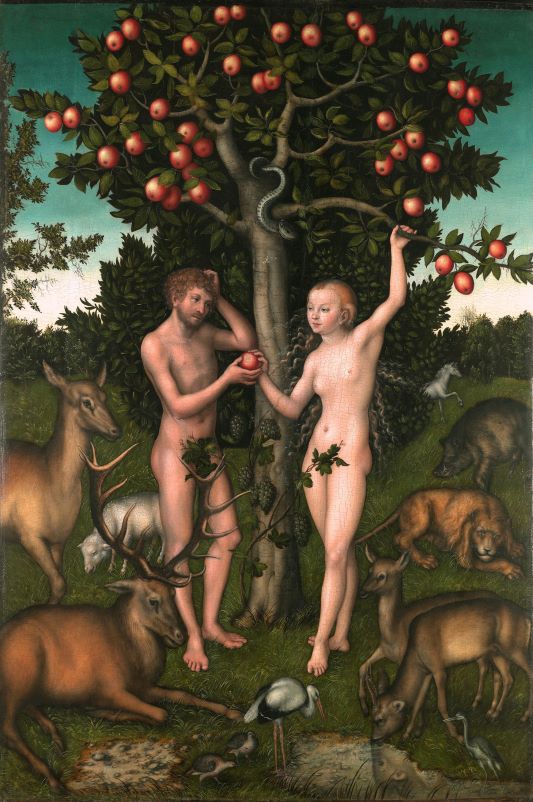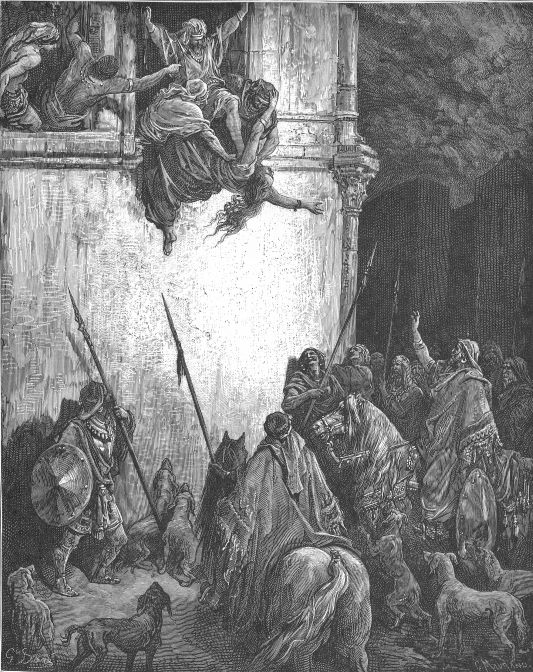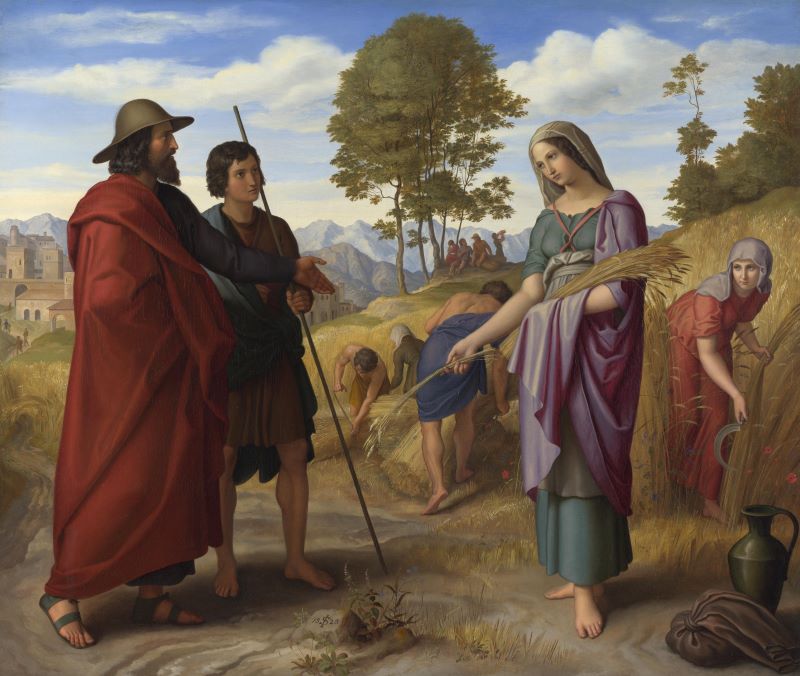We encounter a multitude of female characters in the Bible. They include modest and humble women, but there is also no shortage of strong, independent heroines. What does the female world look like in the Bible and how does it differ from the male perspective?
Contact
Rev. Maciej Basiuk, PhD from the Institute of Theology of the University of Silesia – maciej.basiuk@us.edu.pl
| Katarzyna Stołpiec |
One of the stories presented in the Bible concerns the first human beings — a man and a woman. He was created from the dust of the earth and she was made from his rib. In the Garden of Eden, they enjoyed undisturbed equality, but the original sin they committed brought with it irreversible changes. The equality we know today is far removed from the original state of affairs. What then are the differences between a man and a woman, and where is the woman’s place in light of male domination?
Judith and her maidservant with the head of Holofernes by Orazio Gentlileschi. Work from the collection of the National Museum of Art, Architecture and Design, Oslo Photo: public domain
And he shall rule over you’ — these are the words of Genesis directed towards the woman (Eve) just after she had broken God’s command (Genesis 3:16c). This directive has become so embedded in the socio-cultural canons of many, if not all, countries of the world that throughout thousands of years women were relegated to the roles of obedient servants. Although the image of women has changed considerably over the centuries, the status of the fair sex is now[1]adays still (sub)consciously devalued by many.
Rev. Maciej Basiuk, PhD, a biblical scholar from the Faculty of Theology of the University of Silesia in Katowice, explains the events taking place in the first chapters of Genesis in order to explore the original sin of women and their actual status in ancient Israel.
‘The fact that God utters such strong words of punishment for women (subordination to the man, the hardships of pregnancy, and the pains of childbirth) does not mean that he deprives them of their own voice or dignity. On the contrary, the Old Testament uses many examples to demonstrate that women can play an important role in society, including descriptions of influential queens, brave widows, pious prophetesses, and devoted wives and mothers. Men, although depicted in the Bible as patriarchs, rarely treat their female companions as mere slaves; instead, they respect them and often follow their advice’.
Adam and Eve by Lucas Cranach the Elder. Work from the collection of the Courtauld Institute of Art, London | Photo: public domain
‘The events that took place in the Garden of Eden caused a flaw in the female nature’, explains the biblical scholar. ‘After he tasted the forbidden fruit, the man denied any wrongdoing, passed it on to God, and changed his perception of Eve from his faithful companion to the cause of the incident: ‘The woman whom you gave to be with me, she gave me fruit from the tree, and I ate’ (Genesis 3:12). This indicates that Eve and God are to blame, but not Adam. This was the first manifestation of pride and rebellion against the Creator that occurred after the transgression committed by both people. This is precisely what is important: it was the fault of both people, not just the woman. However, time and interpretations of the story of original sin have solidified the belief that the fault lies on the side of women.
Let us now depart slightly from the topic of the original sin. What kind of women do we encounter when reading the Bible? Strong and courageous, faithful and loving but also cunning and ruthless. Miriam, the prophetess, Moses’ sister, played an important role in saving her infant brother when he was placed in a basket in the bulrushes of the river Nile, while she herself was only a few years old. What is more, when Pharaoh’s daughter pulled him out of the Nile’s waters, Miriam approached her with an idea to bring him a wet nurse, who was in fact his real mother.
Ancient writers also evoke the figure of Deborah, a judge and prophetess in The Book of Judges, as well as Huldah, whom King Josiah asked for an authoritative opinion on the book of the law found in Solomon’s temple. Although in the ancient Judaic tradi[1]tion a woman was supposed to be sub[1]ordinate to a man and thus dependent on him (in terms of social esteem as well as financially — a woman without a man was bound to suffer from poverty or even destitution), we are presented with evidence that the law of the time, strict as it was, did not amplify the hardships of women. The Book of Judges refers to twelve judges, one of whom is Deborah. These facts prove that women were allowed a voice and much hinged on their authority, de[1]spite the common stereotype of being dependent on men.
An example that is also worth mentioning is Sarah, the wife of Abraham. As the partner of the first patriarch of Israel, she is responsible for the household and the duties that constitute the role of the lady of the house. On one occasion Sarah, as per the text of Genesis, firmly requested her husband to cast out the slave girl Hagar from their family along with her son Ishmael. Although this seemed ruthless from Abraham’s point of view, the matriarch was motivated, firstly, by her own reasons (there were growing misunderstandings between her and Hagar, as well as Ishmael’s hostile behaviour towards the recently born Isaac) and, secondly, by a greater sense of faith — she understood better than her husband the path that God in[1]tended her family to follow. Thus, while Abraham objected to casting out the slave girl and their son Ishmael, God interceded for Sarah, commanding him to do as his wife had said (Gen 21:12).
The Death of Jezebel by Gustave Doré | Photo: public domain
Expulsion of Hagar and Ishmael by Abraham by Sir Anthony van Dyck
Photo: public domain
And it was from Abraham and Sarah that the lineage of Jesus began and the plan of salvation was accomplished. To bury Sarah with dignity, Abraham bought the first piece of land in Canaan (the Cave of Machpelah in Hebron), which became his first property in the Promised Land (Gen 23:17-18). She contributed to many achievements of the first patriarch and she is a symbol of faithfulness for many believers.
The female characters found in the Bible also include queens and widows. Judith and Esther are the people who instantly spring to mind as embodiments of cleverness, intelligence, and composure. Both were tasked with saving many human lives: Judith, the widow of Manasseh, saved the city of Bethulia that Nebuchadnezzar wanted to conquer, whereas Esther, the wife of King Ahasuerus, intervened on behalf of Israel. Both women executed their well-thought-out plans, which they had diligently prepared beforehand, displaying their courage and calculating spirit. Neither of them acted hastily, but gradually gained the trust of their opponents, captivating (or even enamouring) them, thus shaking off any possible suspicion and finally achieving the desired result: Judith beheaded Holofernes, the leader of Nebuchadnezzar’s army, while Esther exposed the Haman’s intention to murder all the Israelites.
Among the women who appeared in the Bible, there were also scandalists such as Jezebel and Athaliah, who displayed exceptional brutality. Jezebel was the wife of Ahab, king of Israel reigning from 872 to 851 BC. Named after a Phoeni[1]cian pagan deity (Baal Melkart or Beelzebub), the woman manifested equally devilish qualities. Although her husband, whose story is told in the books of Kings, was not considered a good or pious man, he still respected the prop[1]erty of others and the right to inherit. His wife did not. She unscrupulously caused the wrongful stoning of Naboth, the owner of a vineyard adjacent to her husband’s field, so that he could seamlessly take it over. Her punishment was severe, as she was pushed out of the window of her own palace, ‘…some of her blood spattered on the wall and on the horses, which trampled on her’ (2 Kings 9:33). As her lifeless body lay in the street, it was devoured by wild dogs, and when she was to be buried, only her skull, legs, and hands were found.
Ruth in Boaz’s Field by Julius Schnorr von Carolsfeld. Work from the collection of the National Gallery, London Photo: public domain
Athaliah, on the other hand, was a self-proclaimed queen and the only woman to ever rule in Judah. She was the wife of Joram, son of Jezebel and Ahab (also his biological sister). To maintain power after her late husband, she had all her sons put to death. Only one of them, Ahaziah, survived this brutal onslaught. He was saved by his older sis[1]ter while he was still an infant. Athaliah was a devoted worshipper of Baal. She promoted this spiritual trend among the public by converting temples dedicated to God to those worshipping the pagan deity. Years later, as an adult and the legitimate king, Ahaziah revealed his true identity to his mother, thus removing her from the throne. Athaliah was then slain with a sword.
More than 800 women appear in the Bible: 205 of them are mentioned by name. They did not always play a central role; they were often supporting characters. We should also bear in mind that they were portrayed from a male perspective, as the biblical texts were written by men. It is important to note that the Old Testament was written over a period of approximately thousand years, so we cannot point out the single idea of a woman and judge their behaviour on this basis. The times in which they lived often required them to behave in certain ways. Some of them were warriors, while others were quiet housewives living alongside their husbands. Their image is very complex. What they have in common is the fact that, despite appearances, they were not weak. They had dignity and shared a special feature — it is through a woman that belonging to the Chosen People is passed on.
The article entitled ‘Women in the biblical tradition’ was published in No Limits No. 1(7)/2023, the popular science journal of the University of Silesia.










